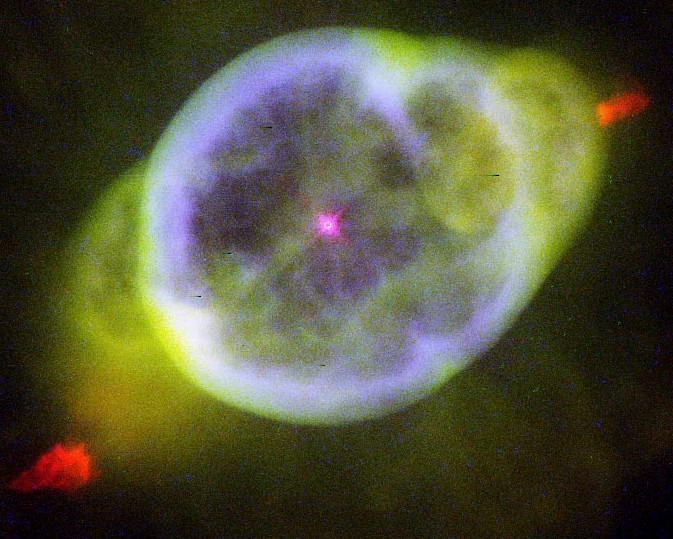Explanation: After a star like the Sun completes fusion in its core, it throws off its outer layers in a brief, beautiful cosmic display called a planetary nebula. NGC 3242 is such a planetary nebula, with the stellar remnant white dwarf star visible at the center. This nebula is sometimes called The Ghost of Jupiter for its faint, but similar appearance to our solar system's ruling gas giant planet. NGC 3242 is light-years across however, and much farther away than the measly 40 light-minutes distance to Jupiter. In fact, while watching this ghostly nebula expand over time, astronomers have estimated the distance to NGC 3242 to be about 1,400 light-years. The red FLIERs visible near the edges of the nebula are still a bit mysterious, though.
1998 1999 2000 2001 2002 2003 2004 2005 2006 2007 2008 2009 2010 2011 2012 2013 2014 2015 2016 2017 2018 2019 2020 2021 2022 2023 2024 |
Январь Февраль Март Апрель Май Июнь Июль Август Сентябрь Октябрь Ноябрь Декабрь |
NASA Web Site Statements, Warnings, and Disclaimers
NASA Official: Jay Norris. Specific rights apply.
A service of: LHEA at NASA / GSFC
& Michigan Tech. U.
|
Публикации с ключевыми словами:
planetary nebula - white dwarf - Планетарная туманность - Юпитер - Эволюция звезд
Публикации со словами: planetary nebula - white dwarf - Планетарная туманность - Юпитер - Эволюция звезд | |
См. также:
Все публикации на ту же тему >> | |
Мнение читателя [1]
